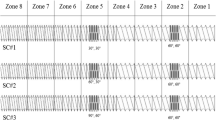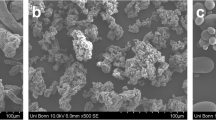Abstract
Poorly water-soluble compounds have a potential risk of low and variable bioavailability caused by incomplete dissolution. Incorporation of organic acids as pH modifiers is effective method for solubility enhancement of basic compounds and requires no special technique and equipment. The purpose of this study was to evaluate the effect of manufacturing method on the extent of drug solubility enhancement. We successfully prepared the granules and tablets containing ketoconazole (KZ), which is weakly basic, as a model compound and citric acid as a pH modifier using conventional wet and dry granulations. KZ solubility under non-sink condition was enhanced with supersaturation using both wet and dry granulations. High-shear granulation was the most effective method in terms of KZ dissolution enhancement, because both an intimate contact and strong bonding between KZ and incorporated acid were achieved. KZ dissolved amount from the granules prepared by high-shear granulation was about eight times higher than that from the granules without the acid. The granulation involved to suppress a diffusion of acid dissolved, leading to the effectively maintained supersaturation state. The bioavailability of KZ after oral administration to rats was improved by applying high-shear granulation with citric acid independent of gastrointestinal pH. The granules prepared by high-shear granulation showed the bioavailability about 1.7-fold higher than that of the physical mixture in rats with and without neutralization of stomach. As a result, both the dissolution and absorption rates of KZ after oral administration were enhanced using conventional manufacturing technology.




Similar content being viewed by others
REFERENCES
Singh S, Parikh T, Sandhu HK, Shah NH, Malick AW, Singhal D, et al. Supersolubilization and amorphization of a model basic drug, haloperidol, by interaction with weak acids. Pharm Res. 2013;30(6):1561–73.
Badawy SIF, Gray DB, Zhao F, Sun D, Schuster AE, Hussain MA. Formulation of solid dosage forms to overcome gastric pH interaction of the factor Xa inhibitor, BMS-561389. Pharm Res. 2006;23(5):989–96.
Adachi M, Hinatsu Y, Kusamori K, Katsumi H, Sakane T, Nakatani M, et al. Improved dissolution and absorption of ketoconazole in the presence of organic acids as pH-modifiers. Eur J Pharm Sci. 2015;76:225–30.
Skiba M, Skiba-Lahiani M, Marchais H, Duclos R, Arnaud P. Stability assessment of ketoconazole in aqueous formulations. Int J Pharm. 2000;198(1):1–6.
Marcelín-Jiménez G, Hernández J, Ángeles AP, Contreras L, Hinojosa M, Rivera L, et al. Bioequivalence evaluation of two brands of ketoconazole tablets (Onofin-K® and Nizoral®) in a healthy female Mexican population. Biopharm Drug Dispos. 2004;25(5):203–9.
Lubach JW, Chen JZ, Hau J, Imperio J, Coraggio M, Liu L, et al. Investigation of the rat model for preclinical evaluation of pH-dependent oral absorption in humans. Mol Pharm. 2013;10(11):3997–4004.
Blum RA, D’Andrea DT, Florentino BM, Wilton JH, Hilligoss DM, Gardner MJ, et al. Increased gastric pH and the bioavailability of fluconazole and ketoconazole. Ann Int Med. 1991;114(9):755–7.
Lelawongs P, Barone JA, Colaizzi JL, Hsuan ATM, Mechlinski W, Legendre R, et al. Effect of food and gastric acidity on absorption of orally administered ketoconazole. Clin Pharm. 1988;7(3):228–35.
Šantl M, Ilić I, Vrečer F, Baumgartner S. A compressibility and compactibility study of real tableting mixtures: the impact of wet and dry granulation versus a direct tableting mixture. Int J Pharm. 2011;414(1-2):131–9.
Onoue S, Inoue R, Taniguchi C, Kawabata Y, Yamashita K, Wada K, et al. Improved dissolution and pharmacokinetic behavior of dipyridamole formulation with microenvironmental pH-modifier under hypochlorhydria. Int J Pharm. 2012;426(1-2):61–6.
Badawy SIF, Hussain MA. Microenvironmental pH modulation in solid dosage forms. J Pharm Sci. 2007;96(5):948–59.
Bi M, Kyad A, Alvarez-Nunez F, Alvarez F. Enhancing and sustaining AMG 009 dissolution from a bilayer oral solid dosage form via microenvironmental pH modulation and supersaturation. AAPS Pharm Sci Tech. 2011;12(4):1401–6.
Taniguchi C, Inoue R, Kawabata Y, Yamashita K, Wada K, Yamauchi Y, et al. Novel formulations of dipyridamole with microenvironmental pH-modifiers for improved dissolution and bioavailability under hypochlorhydria. Int J Pharm. 2012;434(1-2):148–54.
Hawley M, Morozowich W. Modifying the diffusion layer of soluble salts of poorly soluble basic drugs to improve dissolution performance. Mol Pharm. 2010;7(5):1441–9.
Council of Europe. European Pharmacopoeia, 8th ed., Strasbourg. 2.9.34. Bulk density and tapped density of powders 07/2015: 20934; 2016.
Council of Europe. European Pharmacopoeia, 8th ed., Strasbourg. 2.9.36. Powder flow 01/2010: 20936; 2016.
Council of Europe. European Pharmacopoeia, 8th ed., Strasbourg. 2.9.1. Disintegration of tablets and capsules 04/2011: 20901; 2016.
Taniguchi C, Kawabata Y, Wada K, Yamada S, Onoue S. Microenvironmental pH-modification to improve dissolution behavior and oral adsorption for drugs with pH-dependent solubility. Expert Opin Drug Deliv. 2014;11(4):505–16.
Wikberg M, Alderborn G. Compression characteristics of granulated materials. III. The relationship between air permeability and mechanical strength of tablets of some lactose granulations. Int J Pharm. 1990;63(1):23–7.
Siepe S, Lueckel B, Kramer A, Ries A, Gurny R. Strategies for the design of hydrophilic matrix tablets with controlled microenvironmental pH. Int J Pharm. 2006;316(1-2):14–20.
Nie S, Pan W, Li X, Wu X. The effect of citric acid added to hydroxypropyl methylcellulose (HPMC) matrix tablets on the release profile of vinpocetine. Drug Dev Ind Pharm. 2004;30(6):627–35.
Streubel A, Siepmann J, Dashevsky A, Bodmeier R. pH-independent release of a weakly basic drug from water-insoluble and soluble matrix tablets. J Control Release. 2000;67(1):101–10.
Kranz H, Guthmann C, Wagner T, Lipp R, Reinhard J. Development of a single unit extended release formulation for ZK 811 752, a weakly basic drug. Eur J Pharm Sci. 2005;26(1):47–53.
Ferron GM, McKeand W, Mayer PR. Pharmacodynamic modeling of pantoprazole’s irreversible effect on gastric acid secretion in humans and rats. J Clin Pharmacol. 2001;41(2):149–56.
Bigoniya P, Shukla A, Singh CS, Gotiya P. Comparative anti-ulcerogenic study of pantoprazole formulation with and without sodium bicarbonate buffer on pyloric ligated rat. J Pharmcol Pharmacother. 2011;2(3):179–84.
Author information
Authors and Affiliations
Corresponding authors
Rights and permissions
About this article
Cite this article
Adachi, M., Hinatsu, Y., Kusamori, K. et al. Effects of Manufacturing Methods on Dissolution and Absorption of Ketoconazole in the Presence of Organic Acid as a pH Modifier. AAPS PharmSciTech 18, 1203–1212 (2017). https://doi.org/10.1208/s12249-016-0583-2
Received:
Accepted:
Published:
Issue Date:
DOI: https://doi.org/10.1208/s12249-016-0583-2




